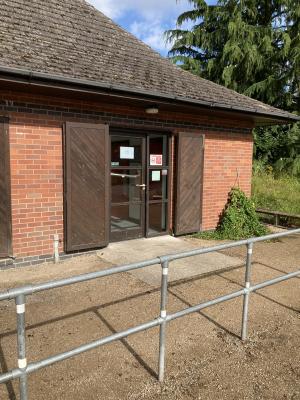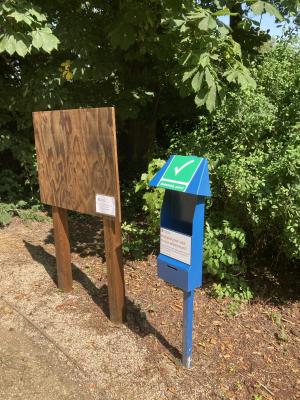Visitor Information




The Site
The arboretum was opened on 23 April 1997. About 20 local schools had helped with the initial planting phase in March 1996, and over 40 attended the grand opening ceremony, conducted by Sir David Attenborough, after whose family the arboretum is named.
The Arboretum site extends to about five acres, and forms part of the land that used to belong to Home Farm. (The old farmhouse still exists nearby and has been converted into maisonettes.) The Arboretum features possibly the only surviving example in the city of a medieval ridge-and-furrow field, and also contains two large ponds, complete with a well-constructed boardwalk to provide access for observation and pond-dipping.
Importantly for schools and other visiting groups, the Arboretum development also includes a purpose-built classroom. If you would like to arrange an educational visit or a guided tour then please contact us on 0116 252 3666 or email us.
The Trees
The planting scheme at the Arboretum is designed to display our native trees in the sequence in which they arrived in this country following the ending of the last ice-age, approximately 10,000 years ago. Thus among the first trees you will meet on going for a walk around the arboretum will be Scots Pine, Juniper, Hazel and Birch; among the last is the Beech, which apparently crossed from France just before the English Channel formed about 7,500 years ago. The timing of the various arrivals is based largely upon the evidence of fossil pollen, but also to some extent on larger remains.
Natives and Aliens
Some explanation is needed for what we mean when we say that a tree is native. The terms 'native' and 'alien' have attracted a certain amount of debate and discussion, especially when applied to the movement of people. In a botanical context in the British Isles, the position is as follows:
A native species is one that is deemed have evolved entirely in these islands, or arrived here by any means before the Neolithic period, or arrrived here since the Neothilic by a method independent of human activity.
The Neolithic is defined as havng begun about 5,000 years ago.
An alien plant, on the other hand, is one which reached the British Isles as a result of the activities of Neolithic or post-Neolithic man or of his domestic animals.
This definition recognises that whilst the agents of dispersal, such as wind and birds, have always been active, the human species has recently become a disperser of plants to the degree that it has had a huge impact on the planet.
Millennia ago hunter-gatherers must have inadvertently transported seeds from one place to another, in much the same way as animals also do. But as soon man adopted agriculture and began to herd flocks and to cultivate the soil, the impact on plant distribution increased enormously.
They were no longer, in the ordinary sense, a part of nature. So that in most cases, we use this point in time, the beginning of the Neolithic period, to make the distinction between native and alien plants.
Not all the trees in the Arboretum are natives. The collection is augmented by many mature aliens, in particular by the familiar Horse Chestnut, which is indigenous to the wilds of Albania and northern Greece, but was only introduced to Britain relatively recently in the early 17th century.